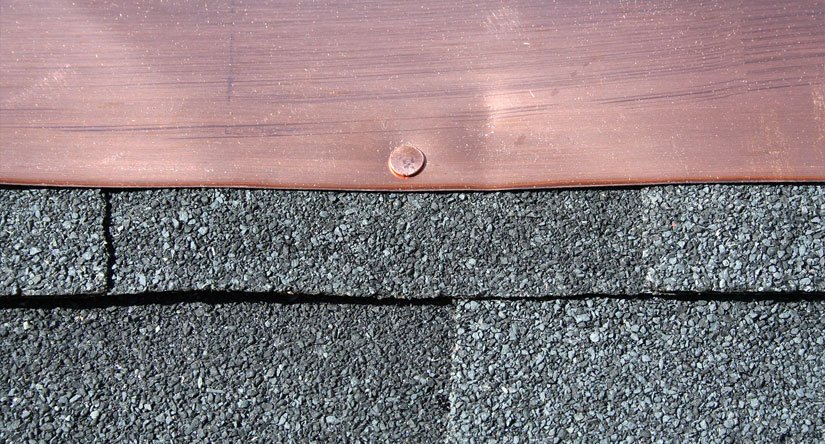Even though the large surface areas of our roof might seem solely responsible for keeping our home dry, there is another component often found where those roofing surfaces intersect — known as roof flashing — that is just as important.
Along with your roof’s primary surface material, such as shingles or tiles, roof flashing serves to reinforce small gaps in your roof’s defenses against the elements. Roof flashing is critical for preventing leaks at “valleys” where slopes of the roof meet or around chimneys, dormers, skylights, vents, and more.
Understanding why roof flashing is essential and maintaining your roof flashing is key to your home’s overall defense against rainwater and other precipitation.
What Is Roof Flashing?
Roof flashing is typically composed of a thin metal resistant to corrosion and can endure harsh weather conditions, such as sleet or heavy winds. While one of the most common materials for flashing is galvanized steel, it can also come in materials, such as copper roofs, aluminum, or lead roofing.
Flashing joins various roofing components. It’s rolled out into place and then sealed to prevent issues like water damage and mold where roofing components intersect, such as valleys, skylights, and vents. Properly maintained roof flashing works by collecting pooling water at these leak-prone areas and directing it towards gutters or off the roof.
Roof Flashing Types
There are many places where roof flashing is vital. Among the most common roof flashing types include:
- Chimney flashing includes flashing along the bottom, step flashing up the sides, and saddle flashing at the top.
- Valley flashing protects the points along the roof where two roof planes join. This flashing provides vital support to these valleys, which often collect more water than the rest of the roof.
- Vent pipe flashing is often cone-shaped, fitting over flues and pipes that penetrate the surface of your home.
- Drip edging is often applied at roof edges where there aren’t gutters and can prevent water from seeping under roofing along the edges of rakes and eaves.
- Step flashing is applied stepwise between each row of shingles to protect where the roof meets the sidewalls of dormers, chimneys, and some skylights.
Are you looking to know more about roof flashing? Get more information about flashing for your roof, and contact Powell’s today.


